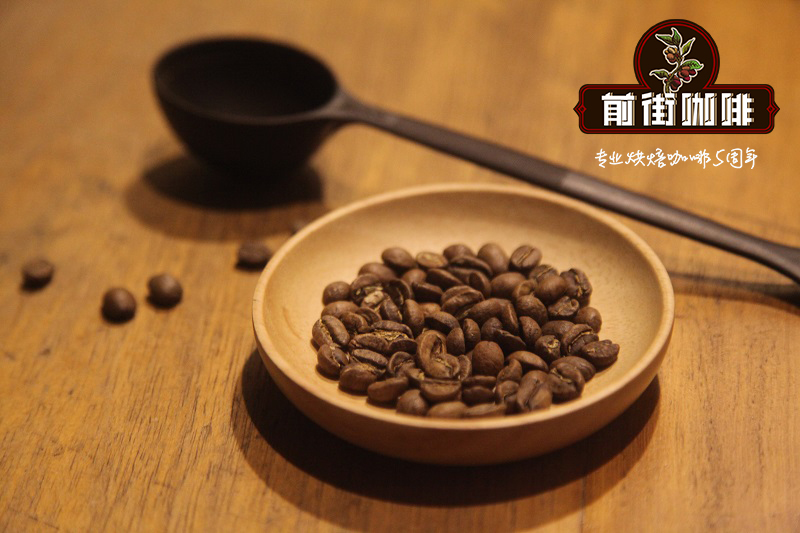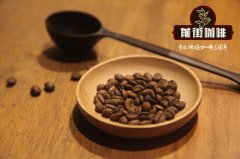Are Ecuadorian coffee beans good? what is the characteristic of Ecuadorian washed coffee bright and clean?

Professional coffee knowledge exchange more coffee bean information please follow the coffee workshop (Wechat official account cafe_style)
Qianjie-Ecuadorian Coffee introduction
Ecuador is prone to such subtle changes, and minor climate changes can have a huge impact on farmland, whether due to elevation and the equator, or to the jungles in the east and the oceans in the west. Where fog is often seen in the morning and afternoon sun, it is sometimes shrouded in fog all day and cannot be dry even in a drying factory. In some cases, the temperature and exposure can become too high for coffee farms. In order to grow coffee of the same quality as in previous years, coffee farmers must pay more time.
The coffee-growing land of Ecuador is located in the western hills of the Andes south of Guayaquil and in the hills of the coastal province of Manabi. The low altitude area of Manabi, which is 500-700 meters above sea level, is the largest area of production in Arabica, producing about 50% of the country's. Some Robusta varieties, used for soluble (instant) coffee, are grown in northern Ecuador.
Most Ecuadorian coffee is grown on small farms with an area of 1 to 10 hectares, about half of the coffee land is grown separately, while the rest is grown on cocoa, citrus fruits, bananas and mangoes.
Ecuador's coffee is mainly treated by water washing, which can produce coffee with a cleaner taste.
Selecting → to remove pulp → fermenting → washing → drying → shelling
First, add a lot of water to the coffee cherry, rinse away the immature fruits and impurities floating on the surface, select beans, and then use a peeling machine to remove the peel and pulp. Then put it into the fermentation tank to ferment for 18 hours for 36 hours, make the fermentation bacteria dissolve the pectin on the surface of coffee cherries, wash it with clean water, dry it for 1-3 weeks, then dry it with a machine, and use a sheller to remove endocarp, peel, seed shell and silver film, which is quite cumbersome.
Knowledge: northern Ecuador, growing Colombian and Castillo species from Colombia
In short: Qianjie is a coffee research hall, happy to share the knowledge about coffee with you, we share unreservedly just to make more friends fall in love with coffee, and there will be three low-discount coffee activities every month. The reason is that Qianjie wants to make more friends drink the best coffee at the lowest price, which has been Qianjie's tenet for 6 years!
END
Important Notice :
前街咖啡 FrontStreet Coffee has moved to new addredd:
FrontStreet Coffee Address: 315,Donghua East Road,GuangZhou
Tel:020 38364473
- Prev

Ecuadorian coffee bean brands recommend Ecuadorian coffee beans as a sweet and bright surprise
Professional coffee knowledge exchange more coffee bean information please follow the coffee workshop (Wechat official account cafe_style) front street-Ecuador Coffee introduction Ecuador is one of the few countries in South America that produces both Arabica and Robusta coffee. It is located between Colombia and Peru in South America. Coffee has been grown for a long time and has been planted since the beginning of the 19th century.
- Next

Arabica is not the only coffee bean in Ecuador.
Professional coffee knowledge exchange more coffee bean information please follow the coffee workshop (Wechat official account cafe_style) front street-Ecuadorian coffee introduction coffee acidity is another choice criteria. The acidity is mainly related to the altitude of the producing area. Most of the world's coffee is produced at low elevations, such as Vietnam, Indonesia, Africa, Brazil, with medium to low acidity. But like Ecuador,
Related
- Beginners will see the "Coffee pull flower" guide!
- What is the difference between ice blog purified milk and ordinary milk coffee?
- Why is the Philippines the largest producer of crops in Liberia?
- For coffee extraction, should the fine powder be retained?
- How does extracted espresso fill pressed powder? How much strength does it take to press the powder?
- How to make jasmine cold extract coffee? Is the jasmine + latte good?
- Will this little toy really make the coffee taste better? How does Lily Drip affect coffee extraction?
- Will the action of slapping the filter cup also affect coffee extraction?
- What's the difference between powder-to-water ratio and powder-to-liquid ratio?
- What is the Ethiopian local species? What does it have to do with Heirloom native species?

